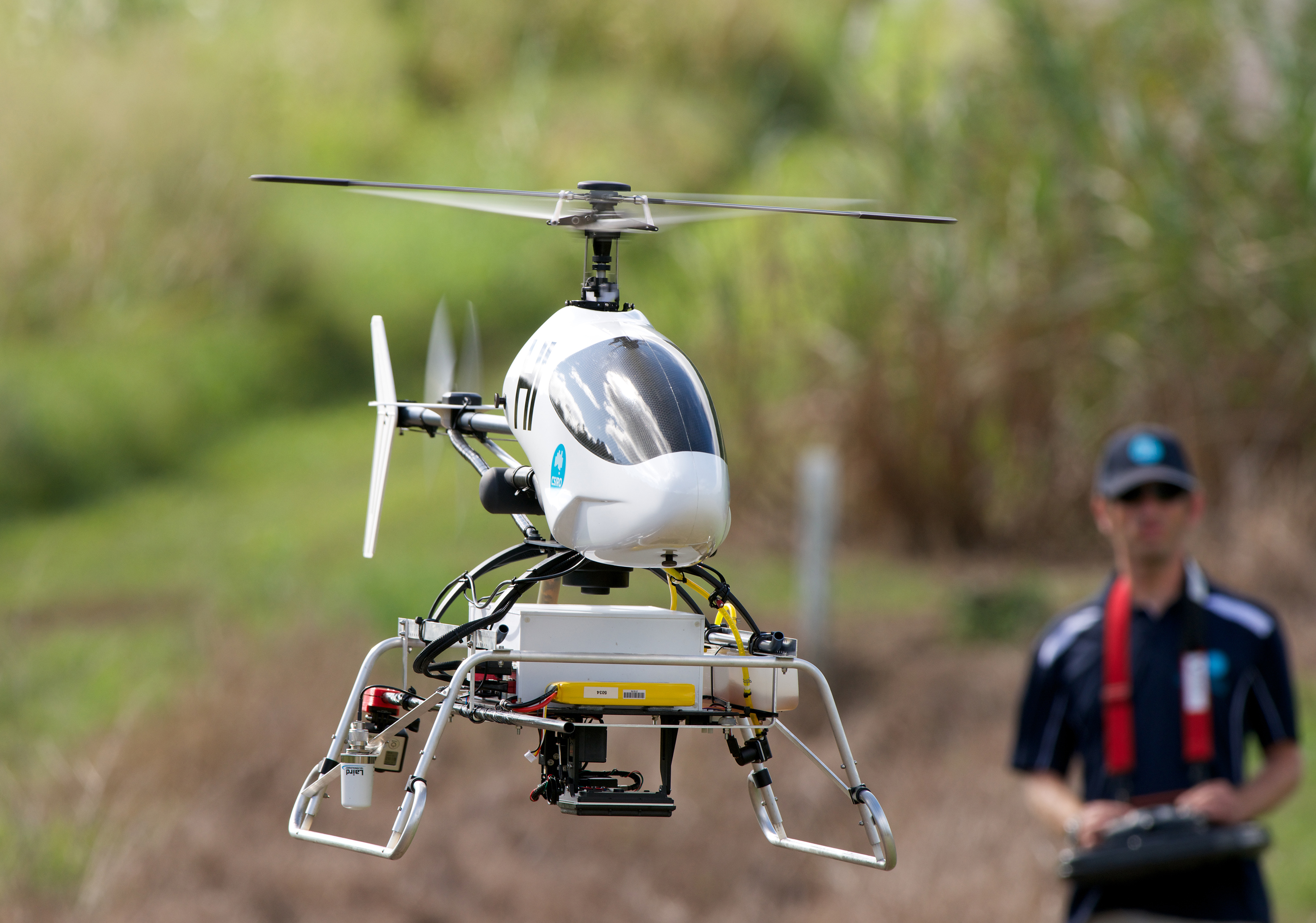Robots to ResQu rainforests from purple plague

Australia’s rare and precious rainforests, like the iconic Daintree, could have an unexpected aerial ally in the battle against weeds – autonomous helicopters.
Two Project ResQu helicopters developed by CSIRO completed trial flights near Cairns, locating weeds like the dreaded ‘purple plague’, or Miconia calvescens, faster and more reliably than ever.
Developed by robotics researchers at CSIRO, in partnership with Biosecurity Queensland, the unmanned helicopters found weeds using sophisticated imaging technology. The helicopters are safer and a more convenient way of mapping weeds in remote and difficult terrain.
CSIRO Biosecurity Flagship Science Director, Dr Gary Fitt, said access to dense rainforests was difficult for people but all-too-easy for weeds which get carried in by animals or blown in from gardens or farms.
“Miconia is among the worst of a number of weeds that pose a significant threat to Australia’s precious rainforest remnants,” Dr Fitt said.
“Unless detected and eradicated early, they can cause irreversible damage to our native plant and animal populations.
“In the biosecurity space effective surveillance is critical – we need to be able to detect incursions quickly and accurately. Technologies like the autonomous helicopter or other autonomous platforms provide us with another tool in the fight against these biological invasions.”
The unmanned Project ResQu helicopters surveyed rainforests at El Arish, near Cairns and found not only found Miconia but several other weed species. The helicopters can navigate obstacles without human control while recording locations and images for biosecurity staff to scan for evidence of weeds.
According to robotics researcher Dr Torsten Merz the helicopters are small enough to fit in the back of a van, are easy to use and operate under controlled conditions with failsafe mechanisms built-in.
“We built the prototypes over two years and trialled them in difficult conditions,” Dr Merz said.
“They performed better than expected, finding Miconia plants in dense rainforest that hadn’t been spotted before. Once the invasive plant is identified, they are removed from the rainforest.”
Queensland Science Minister Ian Walker said the robotic helicopter played a key role in protecting native flora from weeds and was a good example of using new technology to provide better outcomes.
“They allow the team to review footage when they need to rather than take to the skies and eyeball weeds on the go from full-sized manned helicopters, which can also be expensive and time consuming,” Minister Walker said.
“This not only saves money but also means we can boost our biosecurity by carrying out more effective mapping.”
 Follow
Follow